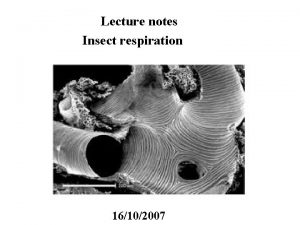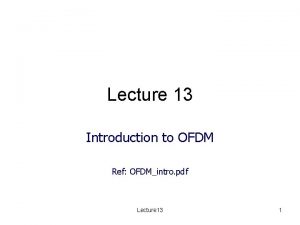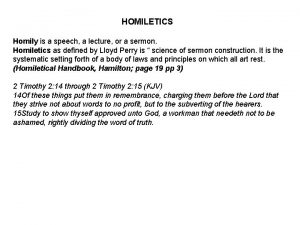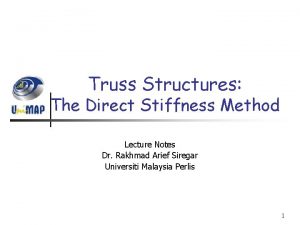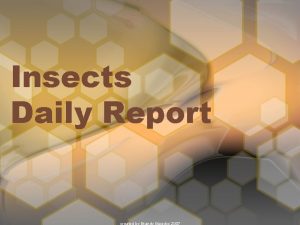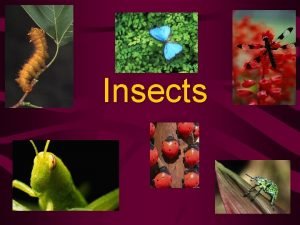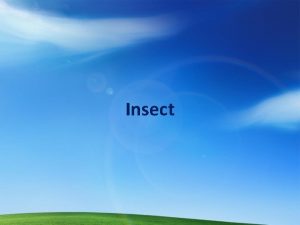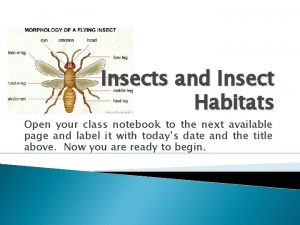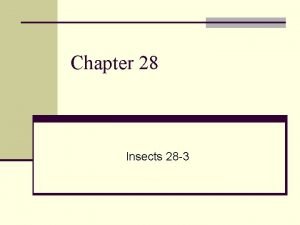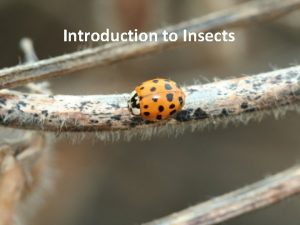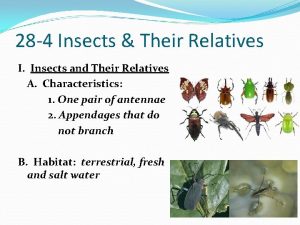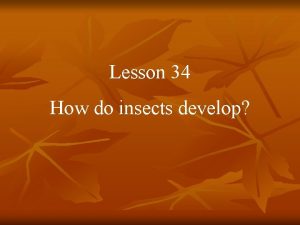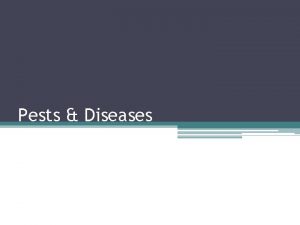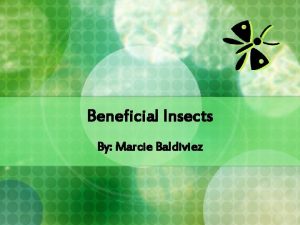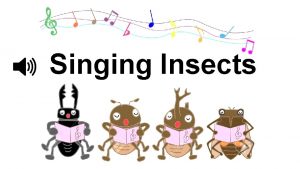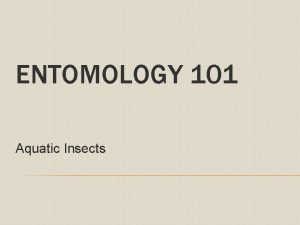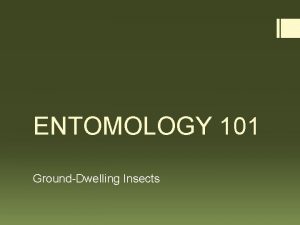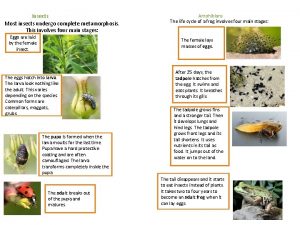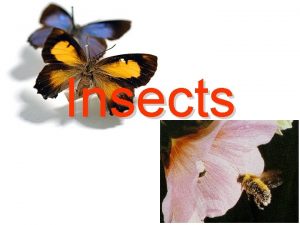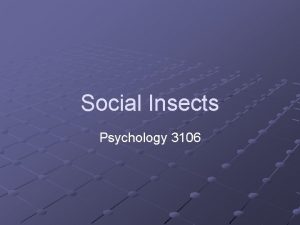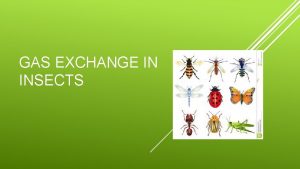Lecture notes Insect respiration 16102007 Insects having open































- Slides: 31

Lecture notes Insect respiration 16/10/2007








• Insects having open spiracles are able to close them either with • 1. Valves on outside or on outer part of the atrium • 2. Muscles behind the atrium • It is important for the insect to be able to close the spiracles for: • 1. Prevent loss of water • 2. Provides basis for unidirectional




Tracheoles. The tracheolar extremities are filled with a liquid. They are very small, 1μm in diameter or 0. 1μm or less. A cell may be 30μm.

• Oxygen enters the spiracle and goes throughout the entire tracheal system by a combination of diffusion along a concentration gradient and the process known as ventilation.

• Opening and closure of the spiracles • 1. When closure muscle contracts they are closed • 2. When closure muscle relaxes they open • What regulates their opening and closing? • 1. Under the control of the autonomic nervous system in response to the local chemical stimuli of the area

• Factors regulating the nervous signal going to the spiracle muscles • 1. High levels of carbon dioxide and low levels of oxygen in tissues This causes a reduction in the action potential frequency of the nerves going to the spiracle muscles. • . This causes relaxation of the closure muscles and spiracles open 2. Water balance can also affect this. Less water, they remain shut. • New evidence suggests that there is also neurohormonal control over • insect breathing. (see Slama, K. 1999. Active regulation of insect respiration. Ann. Entom. Soc. Amer. 92: 916929.



Locke, M. 1997. Caterpillars have evolved lungs for hemocyte gas exchange. J. Insect Physiol. 44: 1 -20.

• Common misconception: • Insect tracheal system is inefficient at transport of gases • Reality: • In air, oxygen is delivered 200, 000 times faster and carbondioxide 10, 000 faster than in blood. • The largest insects known to exist would get adequate oxygen supply and carbon dioxide removal through simple diffusion • (e. g Meganeura monyi, ancient dragonfly with a wingspan of 70 cm, lived 280 mya) » Burmester 2005

GILLS



Air stores for aquatic insects-open directly into the spiracle. Hydrofuge hairs cover the spiracle. Dytiscus beetles carry a bubble or store of air at their posterior ends.

Respiratory siphons


The egg shell and membranes serve as the exchange barriers and surface for embryos the are placed in them. Pore size and number become important factors in respiration




 16102007 colour
16102007 colour 01:640:244 lecture notes - lecture 15: plat, idah, farad
01:640:244 lecture notes - lecture 15: plat, idah, farad External respiration
External respiration Internal and external respiration
Internal and external respiration 영국 beis
영국 beis Project procurement management lecture notes
Project procurement management lecture notes Theology proper lecture notes
Theology proper lecture notes Public sector accounting definition
Public sector accounting definition 4ps of project management
4ps of project management Magnetism
Magnetism Classical mechanics
Classical mechanics Physical science lecture notes
Physical science lecture notes Power system dynamics and stability lecture notes
Power system dynamics and stability lecture notes Microbial physiology lecture notes
Microbial physiology lecture notes Mechatronics lecture notes
Mechatronics lecture notes Ternology
Ternology Financial engineering notes
Financial engineering notes Bjt transistor notes
Bjt transistor notes Software engineering lecture notes
Software engineering lecture notes Introduction to ofdm
Introduction to ofdm Land use planning lecture notes
Land use planning lecture notes Project quality management lecture notes
Project quality management lecture notes Lecture notes on homiletics
Lecture notes on homiletics Foundation engineering lecture notes
Foundation engineering lecture notes Image processing lecture notes
Image processing lecture notes Intermediate microeconomics lecture notes
Intermediate microeconomics lecture notes Parallel and distributed computing lecture notes
Parallel and distributed computing lecture notes Decision theory lecture notes
Decision theory lecture notes Nonlinear regression lecture notes
Nonlinear regression lecture notes Advanced inorganic chemistry lecture notes
Advanced inorganic chemistry lecture notes Fundamental deviation table
Fundamental deviation table Stiffness matrix method lecture notes
Stiffness matrix method lecture notes
